Our Amazon River adventure ended with visits to two final port stops – Parintins and Santarem.
Parintins is small, with a population of about 115,000 and is located on Tupinambarana Island. Its primary claim to fame is the Folklore Festiva, a popular event each year in June and depicting Boi-Bumbá. This is an interactive play which originated in the 18th century. It is a form of social criticism. Lower class Brazilians mock and criticize those of higher social status through a comedic Folklore story told in song and dance. Though not as well known internationally as Carnival and other Brazilian festivals, it is older and deeply rooted in the culture of Brazil. Unfortunately, we didn’t know about this as there was a performance available on excursions which those who went said was very colorful.
Parintins, like nearly all other Brazilian municipalities, was originally inhabited by indigenous peoples. Its discovery occurred in 1749 while going down the Amazon River, the explorer José Gonçalves da Fonseca, noticed an island located on the right bank of the big river Amazon. The foundation of the town began in 1796 established by José Pedro Cordovil, who came with his slaves to concentrate on fishing arapaima and agriculture.
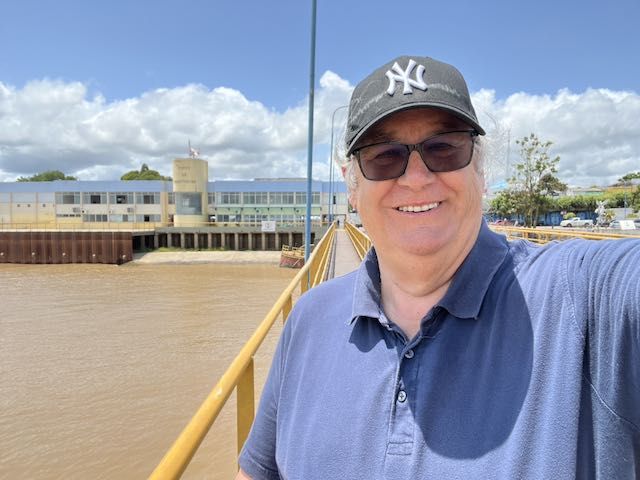
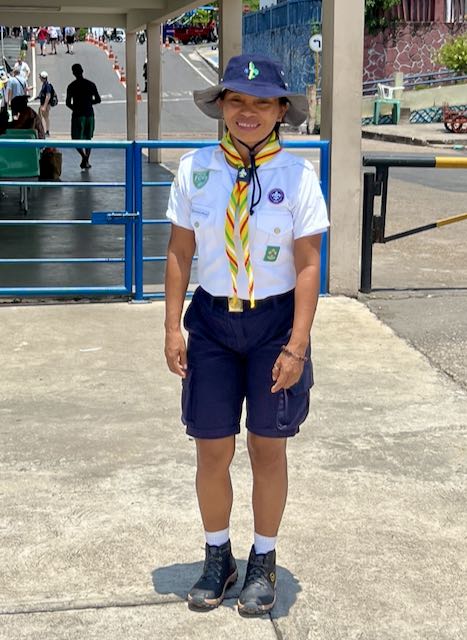
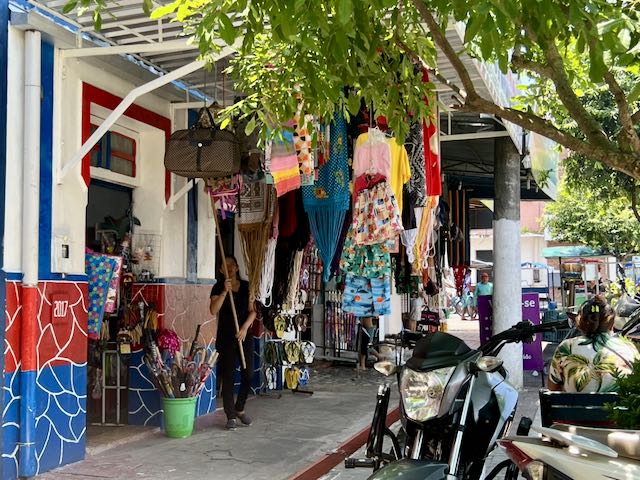
While I went ashore, there wasn’t much to see around the cruise terminal area and the visit was quite short as a result. Santarem, on the other hand, included a shore excursion – Highlights of Santarem.
Santarem, a city and municipality in the western part of the state of Pará and located at the confluence of the Tapajós and Amazon Rivers, was founded by Portuguese colonists in 1661.Before the Portuguese arrived, it was home to the Tapajós Indians, after whom the river was named. Santarem is the second-most important city in the state and is the financial and economic center of western Pará. It is located some 500 miles from the two largest cities in the Brazilian Amazon: Manaus, upriver and Belém, located downriver at the junction of the Amazon River and the Atlantic Ocean. With a population estimated at 305,000 people, Santarém is the third most populous city in the state of Pará. Bordered by both the Amazon and the Tapajós rivers that run in the front of the city, side by side, without mixing. The Amazon’s brown, milky water carries sediment from the Andes in the East, while the Tapajós’s water carries less sediment, is somewhat warmer and has a deep-blue tone. This phenomenon is called “the meeting of the waters” by locals. Until mid 21st century, the town was accessible only by water or air. A boating culture is still very much in evidence.
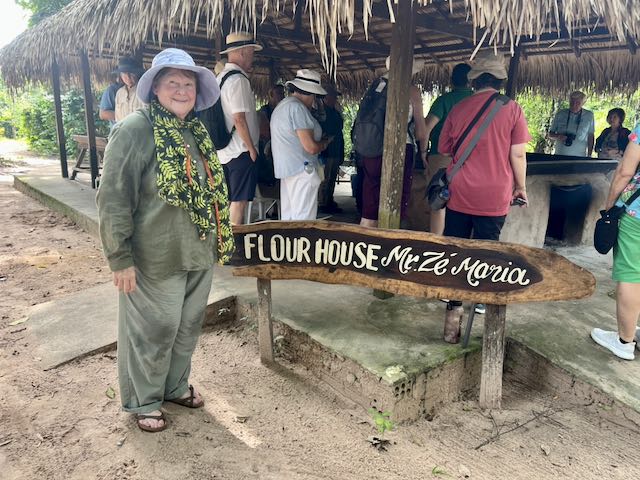
The first use of rubber was by the indigenous cultures of Mesoamerica. Rubber was used by the Maya and Aztec cultures – in addition to making balls for game, Aztecs used rubber for other purposes, such as making containers and to make textiles waterproof by impregnating them with the latex sap.
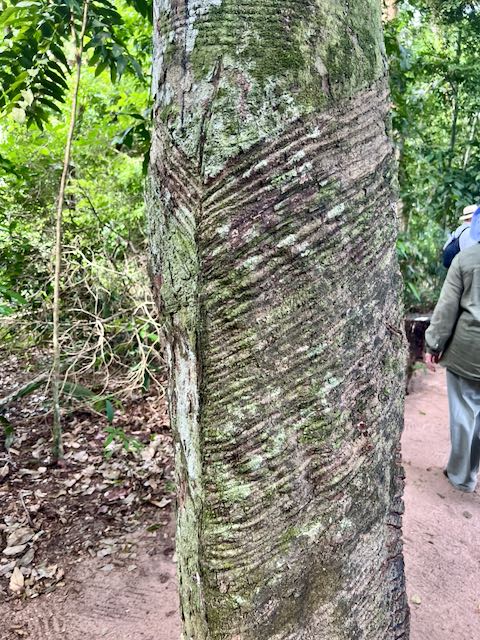
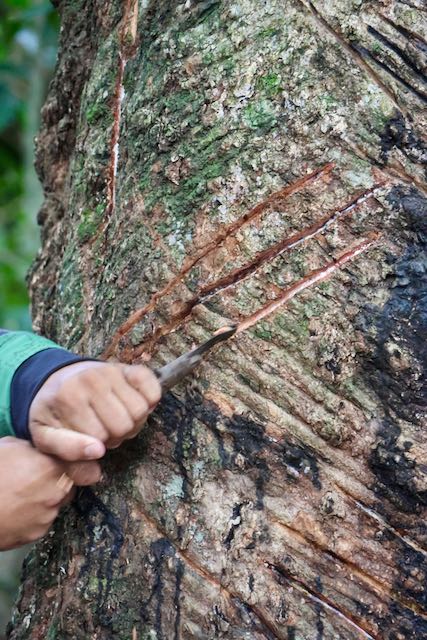
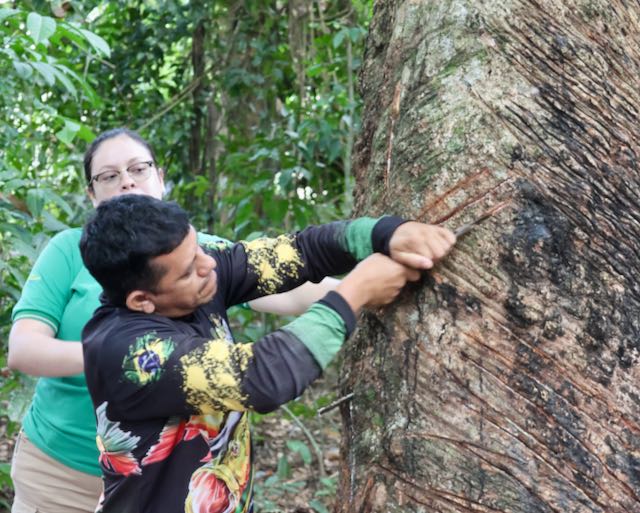
Charles Marie de La Condamine is credited with introducing samples of rubber to the Académie Royale des Sciences of France in 1736. In 1751, he presented a paper by François Fresneau to the Académie (published in 1755) that described many of rubber’s properties. In England, Joseph Priestley, in 1770, observed that a piece of the material was extremely good for rubbing off pencil marks on paper, hence the name “rubber”. It slowly made its way around England. After many years of people fooling around with the rubber tree sap, Charles Goodyear developed vulcanization in 1839 making it much more useable for many products.
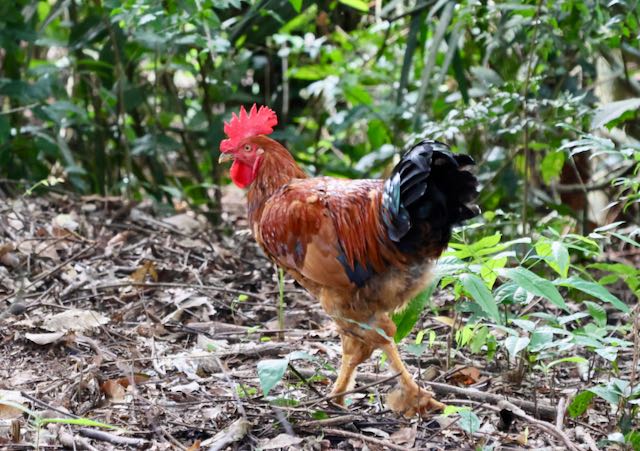
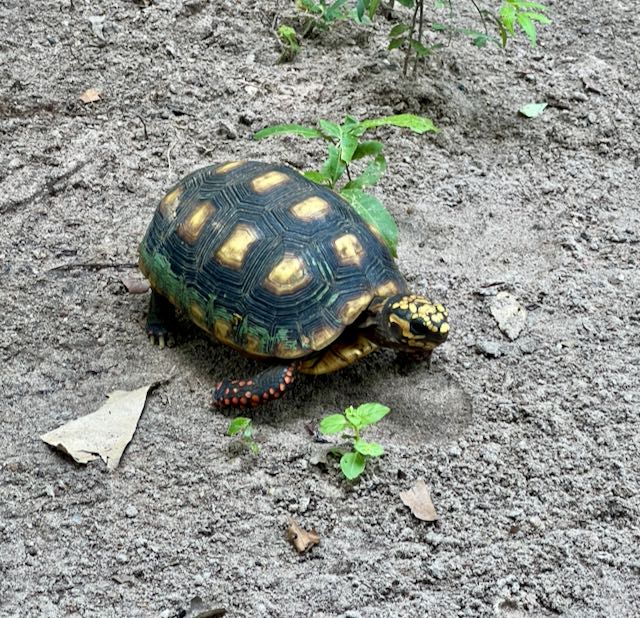
South America remained the main source of latex rubber used during much of the 19th century. The rubber trade was heavily controlled by business interests but no laws expressly prohibited the export of seeds or plants. In 1876, Henry Wickham smuggled 70,000 Amazonian rubber tree seeds from Brazil and delivered them to Kew Gardens, England. Only 2,400 of these germinated, however, the seedlings were then sent to Malaysia where they thrived in plantation form – thus breaking the monopoly held by Brazil for the rubber sap.
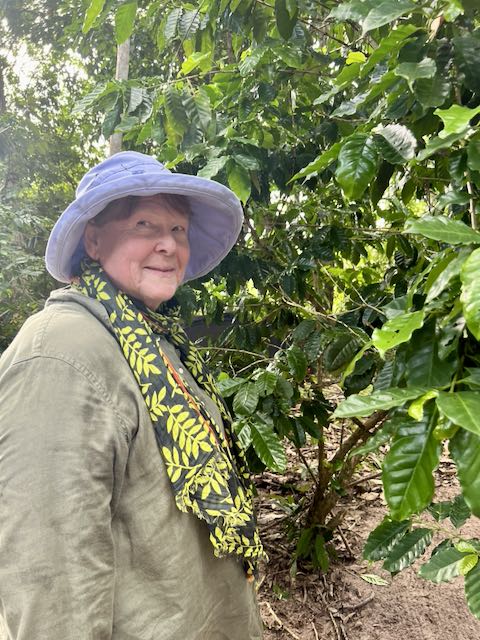
Our guide showed us how the tree is scored to release the sap and how it is harvested. The trees will produce the sap for the better part of 35 years or so after which the production greatly falls off.
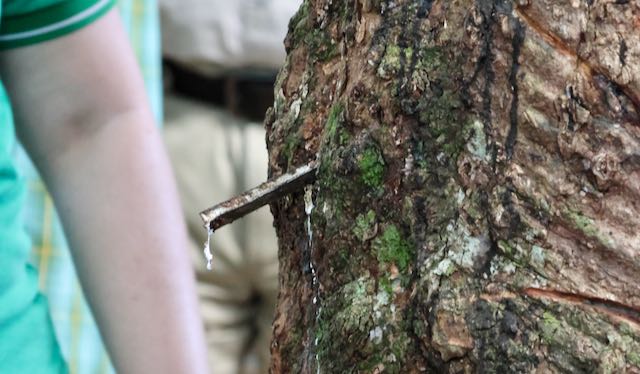
After the rubber tree, our guide explained everything there is to know about the cassava plant whose poisonous roots are used to make manioc flour and, after processing, tapioca and flavoring. Once the plant has been harvested, it is cleaned and ground into small strands. After all the moisture is squeezed out, the resulting material is dried and separated. One of the final products, from this, is tapioca!
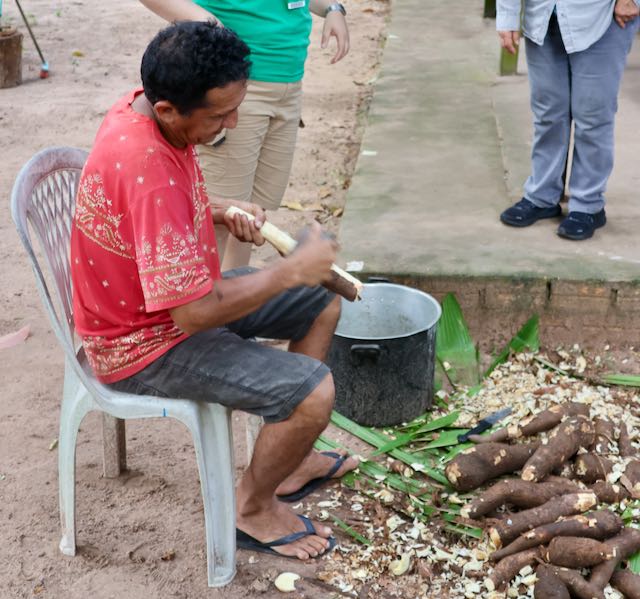
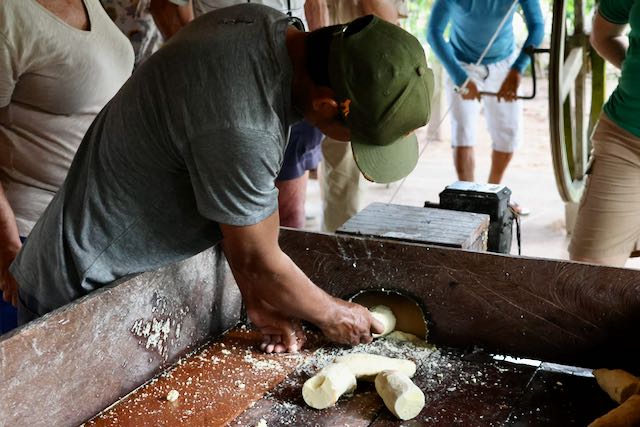

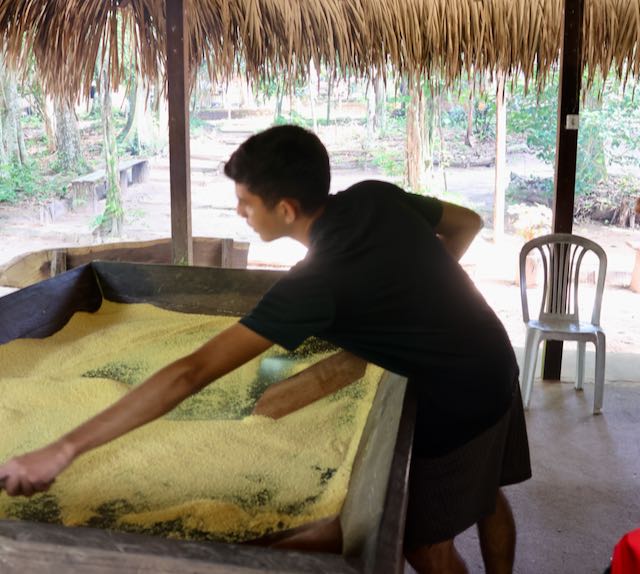
The ’nut’ of Brazil, the Brazil Nut was our next highlighted plant. Brazil nut trees are large tree, reaching 164 feet tall with a trunk 3–7 feet in diameter. It is among the largest of trees in the Amazon rainforest. The fruit of the Brazil nut tree is a large capsule resembling a coconut (4-6 inches in diameter and weighing up to 4.5 pounds) which contains 8–24 wedge-shaped seeds (the “Brazil nuts”) that are 1.5–2 inches long and packed into the capsule like segments of an orange. The fruit takes 14 months to mature after pollination of the flowers. Using a machete, one of the locals broke open one of the nuts and shared the contents.
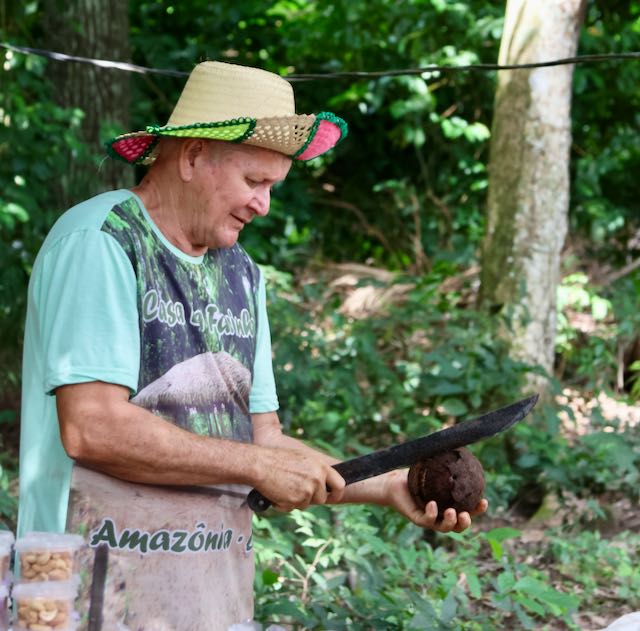
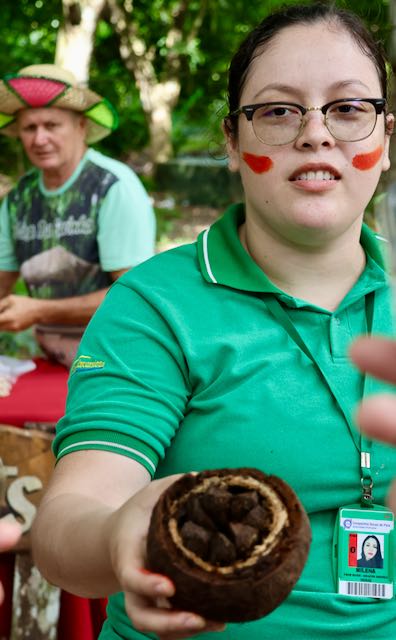
This stop was quite enjoyable and there was a lot to experience and learn.
Back on the bus, we drove by the Fish Market – held along the bay where locals were getting stocked up for the coming weekend (it was Good Friday after all) but we didn’t actually stop.
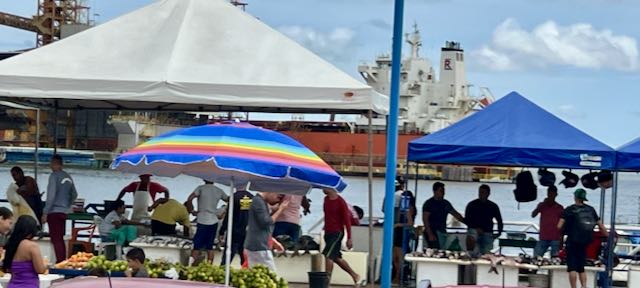
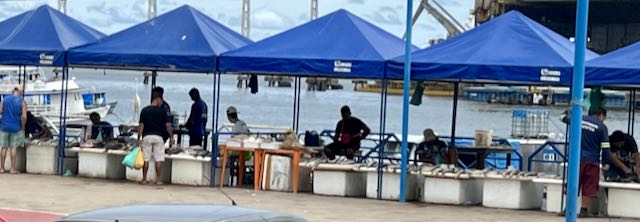
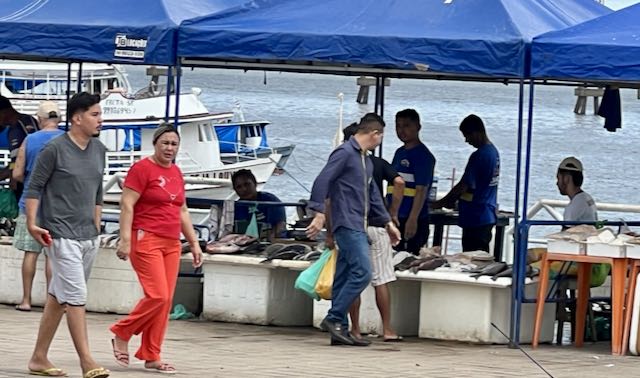
A quick stop was made at the Cathedral of Our Lady Conceicao. This is a modest church with quite a plain interior ,clean and well maintained and used. We left as a service began.
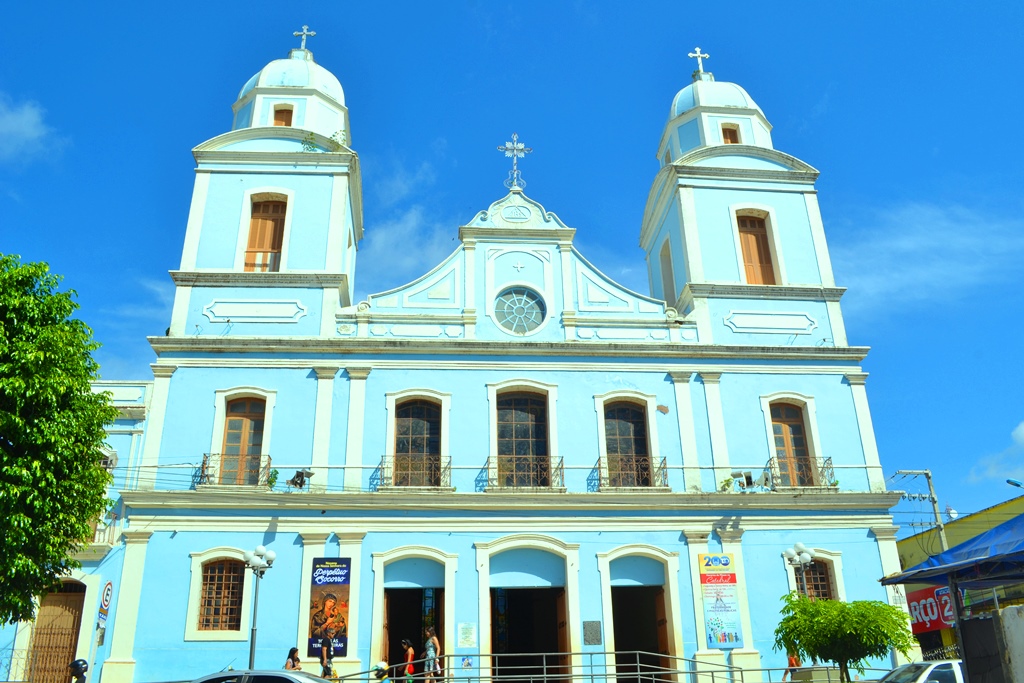
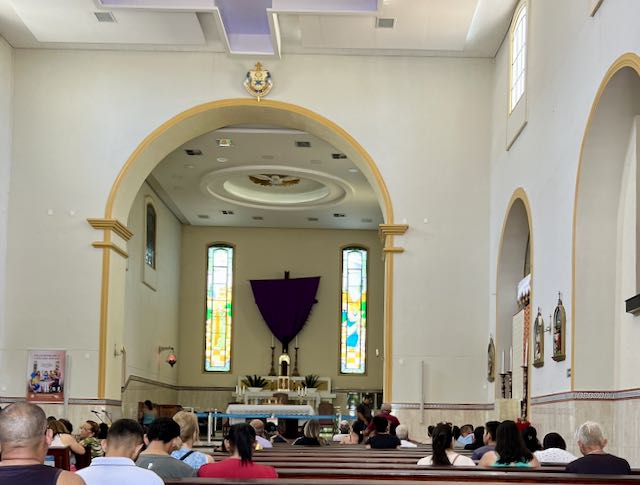
The final stop was the Old Town Hall Building (the Joao Fona Museum). The exterior of the museum is a lovely shade of yellow and in good shape. The museum is on the smaller side but has several nice exhibits. It’s a small museum featuring an interesting collection of stone pieces from the Tapajoara culture that flourished locally more than 6000 years ago. This building dates from 1867 and has been a jail, a city hall, and a courthouse.
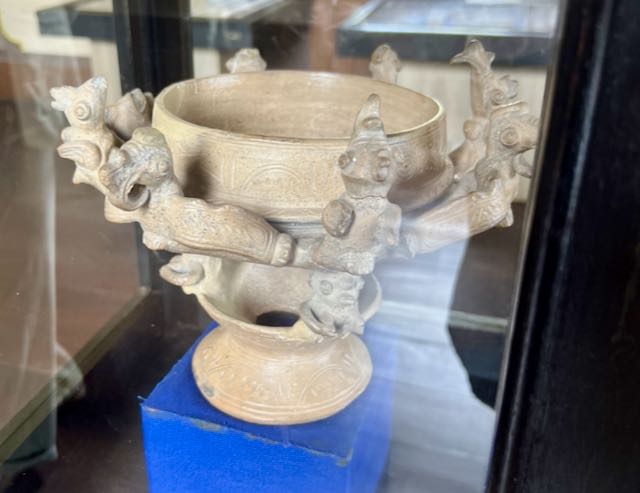
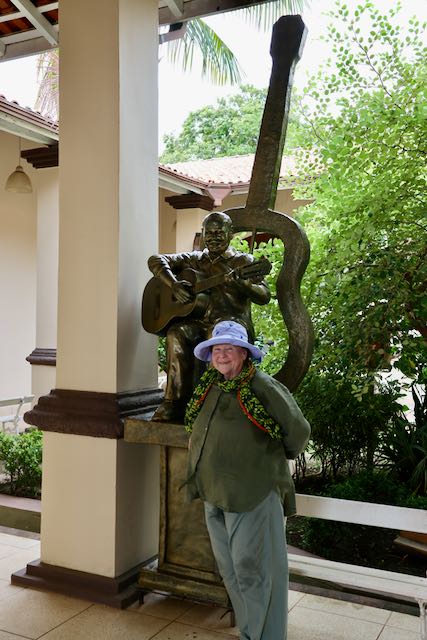
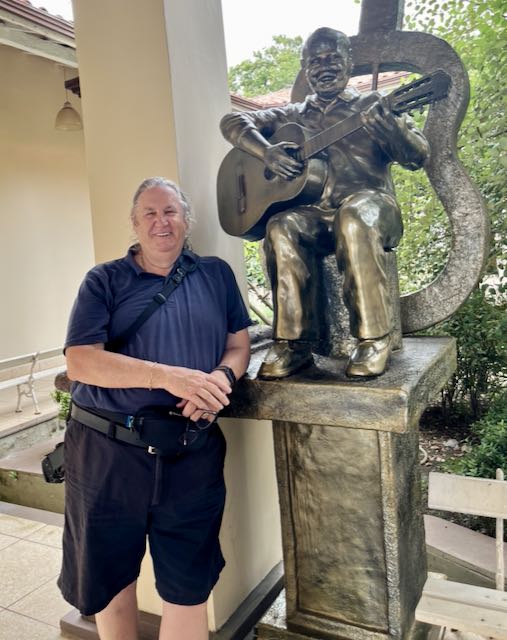
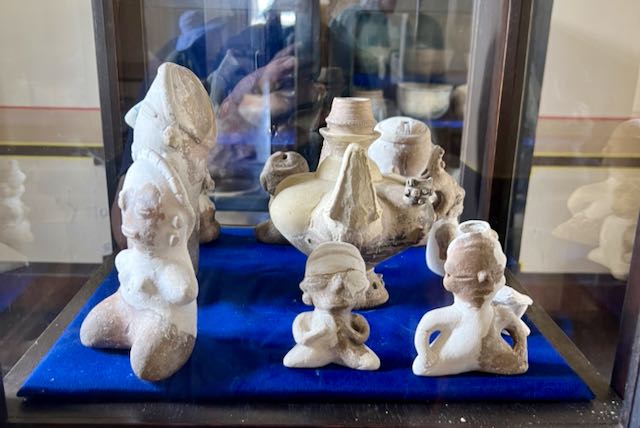
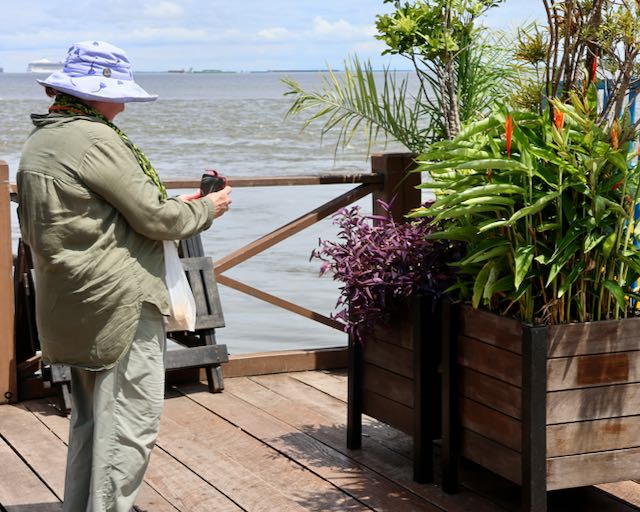
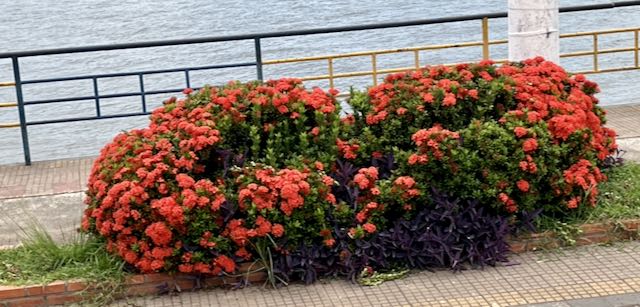
While the Highlights Tour was enjoyable, the first stop at the Demonstration Farm was clearly the highlight.
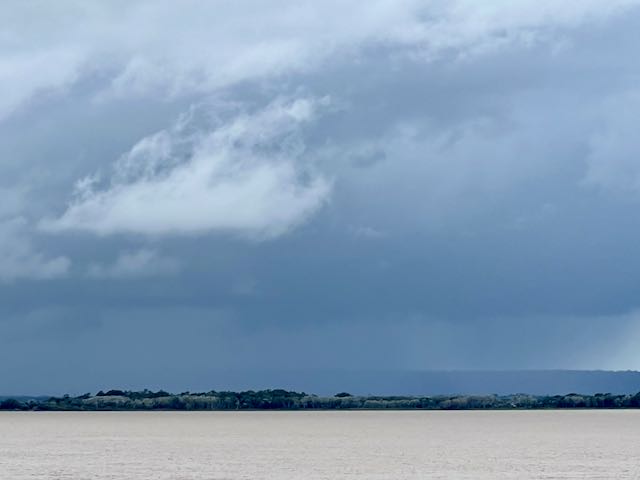
I always enjoy your travel blogs, with lots of interesting places that I will probably never see in person. Thanks for sharing.
I had no idea Brazil nuts grew inside a coconut-like shell!
The Boi Bumba Festival would probably have the need of an interpreter. You probably know that most nursery rhymes were a form of ”dissin” the royalty and other major events. Ring a round the rosie was referring to the bubonic plague.
Great adventure!
Where are we off to next?!
Thanks for sharing so much information!
xo
Europe in the fall
Informative, fun.
Sue
Happy to see you have a lot of family following you!
All these comments must give you a fat head!!!! Still love you though. Marilynn